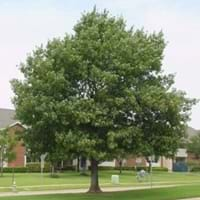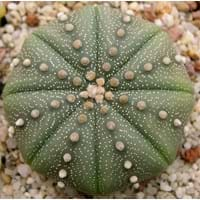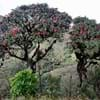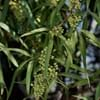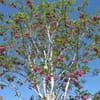Life Span
Perennial
Perennial
Type
Tree
Ornamental Plant
Origin
Northeastern United States, Mid-Atlantic United States, Southeastern United States, North-Central United States, Central United States, South-Central United States, Canada
Not Available
Types
Ashford Oak, Chase Creek Red Oak, Shera-Blair Red Oak
Not Available
Habitat
Sandy areas, Upland, Wooded slopes, Woodlands
Desert, Semi desert
USDA Hardiness Zone
3-9
12-15
Sunset Zone
1a, 1b, 2a, 2b, 3a, 3b, 4, 5, 6, 7, 8, 9, 10, 11, 12, 14, 15, 16, 17, 18, 19, 20, 21, 22, 23, 24
21, 22, 23, 24
Habit
Oval or Rounded
Oval or Rounded
Flower Color
Yellow green
Yellow
Flower Color Modifier
Bicolor
Not Available
Fruit Color
Brown, Sienna
Non Fruiting Plant
Leaf Color in Spring
Green, Dark Green
Not Available
Leaf Color in Summer
Green, Dark Green
Not Available
Leaf Color in Fall
Red, Brown, Dark Red, Bronze
Not Available
Leaf Color in Winter
Not Available
Not Available
Leaf Shape
Maple shaped
Elliptic
Plant Season
Spring, Summer, Fall
Not Available
Sunlight
Full Sun, Partial Sun, Partial shade, Full Shade
Not Available
Growth Rate
Fast
Very Slow
Type of Soil
Clay, Loam, Sand
Not Available
The pH of Soil
Acidic, Neutral
Not Available
Soil Drainage
Well drained
Not Available
Repeat Bloomer
No
Not Available
Tolerances
Pollution, Drought, Salt
Not Available
Where to Plant?
Ground
Container, Ground, Pot
How to Plant?
Seedlings, Stem Planting
Cuttings, Stem Cutting
Plant Maintenance
Medium
Medium
Watering Requirements
Do Not over Water
Needs very little water
In Summer
Lots of watering
Lots of watering
In Spring
Moderate
Moderate
In Winter
Average Water
Average Water
Soil pH
Acidic, Neutral
Not Available
Soil Type
Clay, Loam, Sand
Not Available
Soil Drainage Capacity
Well drained
Not Available
Sun Exposure
Full Sun, Partial Sun, Partial shade, Full Shade
Not Available
Pruning
Remove damaged leaves, Remove dead branches, Remove dead leaves
Remove damaged leaves, Remove dead branches, Remove dead leaves
Fertilizers
Don't fertilize within a year of planting
All-Purpose Liquid Fertilizer
Pests and Diseases
Borers, Caterpillars, Galls, Moth, Red blotch, Scale
Mealy bugs
Plant Tolerance
Drought, Pollution, Salt
Drought
Flowers
Insignificant
Not Available
Flower Petal Number
Not Available
Single
Fragrant Fruit
No
Not Available
Fragrant Bark/Stem
No
Not Available
Showy Foliage
Yes
Not Available
Showy Bark
No
Not Available
Foliage Texture
Coarse
Bold
Foliage Sheen
Matte
Not Available
Invasive
No
Not Available
Self-Sowing
Yes
Not Available
Attracts
Birds, Butterflies
Hummingbirds
Allergy
Not Available
Not Available
Aesthetic Uses
Showy Purposes
Showy Purposes
Beauty Benefits
Not Available
Not Available
Environmental Uses
Air purification
Air purification
Medicinal Uses
Not Available
No Medicinal Use
Part of Plant Used
Whole plant
Not Available
Other Uses
Used as Ornamental plant
Not Available
Used As Indoor Plant
No
Yes
Used As Outdoor Plant
Yes
Yes
Garden Design
Shade Trees, Street Trees
Bedding Plant
Botanical Name
QUERCUS rubra
Astrophytum myriostigma
Common Name
Northern Red Oak
Bishop's Cap Cactus, Bishop's Hat, Bishop's Miter Cactus ,Star Cactus
In Hindi
उत्तरी लाल ओक
Star Cactus
In German
Roteiche
Star Cactus
In French
chêne rouge
Star Cactus
In Spanish
el roble rojo del norte
Star Cactus
In Greek
βόρειο κόκκινο δρυς
Star Cactus
In Portuguese
carvalho vermelho do norte
Star Cactus
In Polish
dąb czerwony
Star Cactus
In Latin
Quercus rubra
Star Cactus
Phylum
Magnoliophyta
Magnoliophyta
Class
Magnoliopsida
Magnoliopsida
Order
Fagales
Caryophyllales
Family
Fagaceae
Cactaceae
Genus
Quercus
Astrophytum
Clade
Angiosperms, Eudicots, Rosids
Angiosperms, Core eudicots, Eudicots
Tribe
Not Available
Cacteae
Subfamily
Not Available
Cactoideae
Number of Species
Not Available
Difference Between Northern Red Oak and Bishop's Cap Cactus
If you are confused whether Northern Red Oak or Bishop's Cap Cactus are same, here are some features about those plants to help you choose better. Many people think that these two plants have the same characteristics, but one can see Northern Red Oak and Bishop's Cap Cactus Information and learn more about it. Fertilizers required for proper growth of Northern Red Oak are Don't fertilize within a year of planting, whereas for Bishop's Cap Cactus fertilizers required are All-Purpose Liquid Fertilizer. Hence, one should know the basic difference between Northern Red Oak and Bishop's Cap Cactus if you are planning to have them in your garden to enhance its beauty.
<
Flowering PlantsImportance of Northern Red Oak and Bishop's Cap Cactus
Want to have the most appropriate plant for your garden? You might want to know the importance of Northern Red Oak and Bishop's Cap Cactus. Basically, these two plants vary in many aspects. Compare Northern Red Oak and Bishop's Cap Cactus as they differ in many characteristics such as their life, care, benefits, facts, etc. Every gardener must at least have the slightest clue about the plants he wants to plant in his garden. Compare their benefits, which differ in many ways like facts and uses. The medicinal use of Northern Red Oak is Not Available whereas of Bishop's Cap Cactus is No Medicinal Use. Northern Red Oak has beauty benefits as follows: Not Available while Bishop's Cap Cactus has beauty benefits as follows: Not Available.
Compare Facts of Northern Red Oak vs Bishop's Cap Cactus
How to choose the best garden plant for your garden depending upon its facts? Here garden plant comparison will help you to solve this query. Compare the facts of Northern Red Oak vs Bishop's Cap Cactus and know which one to choose. As garden plants have benefits and other uses, allergy is also a major drawback of plants for some people. Allergic reactions of Northern Red Oak are Not Available whereas of Bishop's Cap Cactus have Not Available respectively. Having a fruit bearing plant in your garden can be a plus point of your garden. Northern Red Oak has no showy fruits and Bishop's Cap Cactus has no showy fruits. Also Northern Red Oak is not flowering and Bishop's Cap Cactus is not flowering . You can compare Northern Red Oak and Bishop's Cap Cactus facts and facts of other plants too.
